'Great Gatsby' fever is burning high on the digital frontier this morning. Monday morning Facebook and Twitter feeds are filling with the manifested delights of Gatsby's exceptionally extravagant character. With a central plot decidedly residing between a man and his luxuries in this fancy fictional film, what better time to celebrate modern day luxury. Better yet, let's take a look at some of the 'tech-savvy darlings of the digital world'. These creative cats are utilizing technology to transform the way we look at luxury. (Neato!)
"What's luxury to you? Is it a couture Chanel gown? A shiny car with a roaring engine? Perhaps, it's a night of organic wine, artisanal pizza, and a bottomless well of on-demand British sitcoms. However specific you want to get, we always define luxury as exquisite, effortless, and tailored to you. But a decade or so ago, few of those qualities applied to the online experience — it was clunky, complicated, cluttered, and about as personalized as an insurance form.
Now, though, the best e-commerce sites are graceful, digital boutiques, with beautiful photography, custom-curated shopping lists, and style direction from esteemed print editors. The finer vacation booking platforms look like glossy travel magazines, and your favorite fashion blogs are seamlessly shoppable (hi, there). Even the very nature of a photography is changing to match this new landscape (more on that later). What we have now is an inspiring, pixelated marketplace that's not only transformed how we shop, but the very DNA of the storied luxury brands within it, as well.
What happened? Well, a clutch of driven, digital architects saw and capitalized on opportunities that even some of the top technologists and Fortune 500 companies didn't. They looked at the online packaging, marketing, and selling of luxury and saw how it could be as custom-tailored as any couture product. Programmers, artists, entrepreneurs, and editors, these are the people logged on and changing the game."
-Read Full Article by Gabriel Bell on Refinery29 here: http://www.refinery29.com/industry-leaders
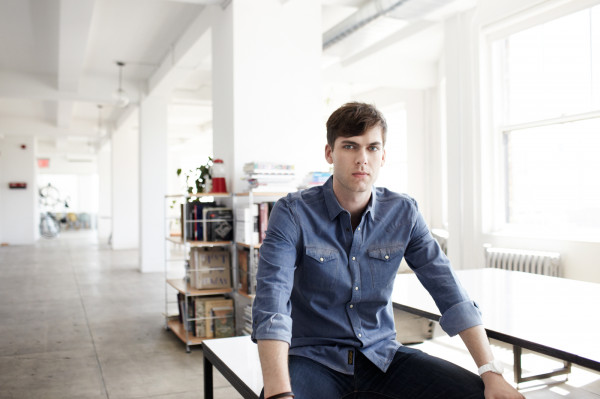
Carter Cleveland, founder, Art.sy
Under the right brush, a few dollars of oil-based paint on a cotton canvas can become a cherished masterpiece worth millions — the greatest luxury of all. Yet, the real-art market has traditionally only existed in a handful of cities. Created in his Princeton dorm room, Carter Cleveland's Art.sy is upending that. With the help of the best galleries in the world, Cleveland is building what could be the art market's new global center for buyers and for folks who just want to look.
Paint By Numbers: "Art.sy isn't about the art first and the science second. It's about the two of them coming together equally. In addition to being an art company, we're a hardcore technology and design company. We bring the two together on equal footing — that's where we think the magic happens."
Image Search: "So many people out there buy nice clothes, apartments, and cars, but they put mass-produced posters and prints on their walls simply because they don't have access to the world's top galleries. For instance, over 50% of the entire U.S. art market goes through Manhattan. By making the art world accessible to anyone with an Internet connection, there's an opportunity to massively expand the market and make fine art something that is one day as popular and ubiquitous as music and film."
Public Gallery: "If you go onto Art.sy, you can see what is currently hanging on the walls of the top galleries in New York, London, Paris, Shanghai, the list goes on. In five years, we hope to be the main sales channel for art galleries in the same way that Yelp helps restaurants receive clients. Now, we'd be very happy if only 1% of our user base buys art — that would make the experience of seeing the world's art, and learning about the world's art, free for the other 99%. It's a public service and a luxury business."
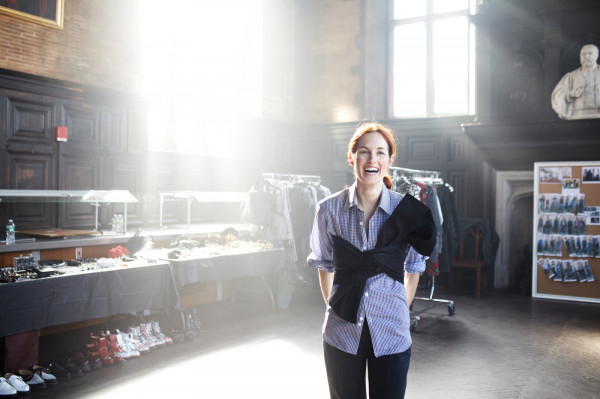
Taylor Tomasi Hill, artistic director, Moda Operandi
When the crimson-haired street-style star Taylor Tomasi Hill left her plum print-publishing position as accessories director at Marie Claire for Moda Operandi — Vogue editor Lauren Santo Domingo and former Gilt Groupe exec Aslaug Magnusdottir's ultra-luxe online retailer — the industry took notice. With one of fashion's favorite young, rising editors poached by e-commerce, we began to wonder if the future of glossy, high-end content was shoppable. We're not wondering anymore.
Attention, Shoppers: “Moda Operandi launched at a time when online retail was dominated by discount shopping. But the thing was, consumers were increasingly comfortable with shopping online for unique, limited, or luxury products. Because we all follow designers and street-style images online, shoppers aremuch savvier about how they define luxury and what pieces they want to buy. The Internet transformedfashion shows from exclusive trade events to global consumer events. Still, the full-priced consumer was largely being ignored. We leveraged all that Fashion Week excitement by giving women access to the pieces they already loved, that might not be at brick-and-mortar luxury retailers.”
Broadband Connection: “One of the best things about technology is the potential for wide outreach. We recently collaborated with goop, which focuses on an impressive range of topics for women — a great opportunity to extend far beyond fashion. Even when I conceptualize and style editorial stories for Moda Operandi, we’re helping our customers imagine new ways to wear our products.”
Learning Curves: “Even though I work at an online company, I’m not the most tech-friendly individual. I carry a BlackBerry for emails and texts, and an iPhone for everything else (especially Instagram!). I was told recently that I have good Instagram etiquette, which was huge! When I first started Instagramming, I did really offensive things like use Kelvin with the border. I should also probably add learning Excel to my to-do list!”
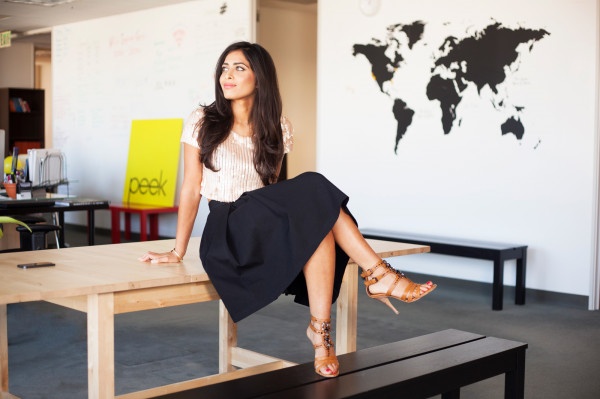
Ruzwana Bashir, founder and CEO, Peek
Planning an eventful, enriching vacation can be maddening, even for a Fulbright scholar, Oxford educated, Harvard MBA, Goldman Sachs, Art.sy, and Gilt Groupe-trained marvel like Ruzwana Bashir. But her frustration with booking an escape became the inspiration behind Peek. Stocked with rich, tailored itineraries, lush photography, and tastemaker travelogues, the soup-to-nuts luxury booking website replaces your travel agent and your glossy travel mags at once. Seemless, indeed.
Tech Crush: "I fell in love with the idea of building a business at a really young age. I craved the opportunity to build a business from scratch. At Gilt Groupe, I realized just how transformative technology could be in creating wonderful user experiences and rethinking traditional business models. I was hooked!"
My Moment: “The inspiration for Peek came from a special birthday trip to Istanbul. I spent 20 hours searching through guidebooks, asking friends, and browsing the web for the best things to do there. Then, I ended up having to call far-flung companies to book all the experiences I'd discovered. It was so lengthy and frustrating, I wished there was a one-stop shop to book amazing activities online. It didn't exist. So, I created it!”
Peek Perfection: "We focus on storytelling through beautiful photography and captivating editorial, so our users can imagine themselves embarking on the activity they’re learning about. We plan a whole trip and discover a city’s hidden gems through a diverse group of tastemakers — Diane von Fürstenberg, Tory Burch, Wolfgang Puck, Steve Aoki, and French Laundry’s Tim Hollingsworth. At its heart, Peek is about being able to tell stories that people can connect with."
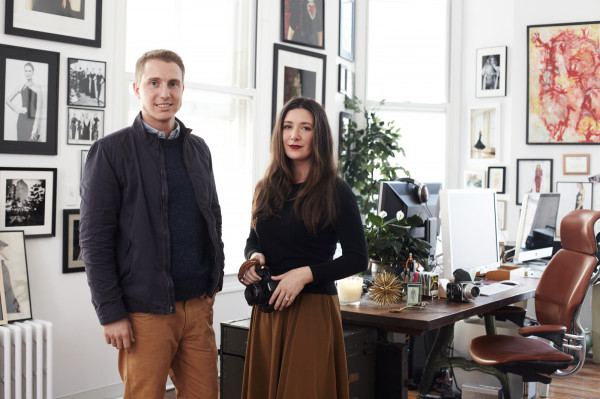
Kevin Burg and Jamie Beck, co-creators, Cinemagraphs
Have you ever seen a cinemagraph? No? Then go here right now. Wow, right? That's what brands like Oscar de la Renta, Chopard, Veuve Clicquot, and others thought about the beautiful mashup of gif tech and photographic technique created by photographer Jamie Beck and digital designer Kevin Burg. The husband-and-wife team may have just created an entire new art form custom-made for the digital age — one that's propagating quickly thanks to its use in top-tier luxury advertising.
Photo Shop:
Beck: “Creating the first cinemagraphs was a very organic experience. We were shooting the shows at New York Fashion Week, and I wanted to capture something beyond a still photo, to make people really see something more — but we didn't believe that people would have the patience to watch videos. Kevin had been working for a couple of years on the idea of a hybrid of photo and video. It took three days of shooting and failing until we got one to work. I'll never forget the moment that photograph came alive, staring at it, and thinking it was going to change our lives.”
Paid Content:
Burg: “These days, luxury brands can allow their audience to find them. Before digital, if you wanted to reach your audience, you had to figure out where they might be — like, say, watching a golf tournament on TV, and present to them there. Now, they find you, and stay with you in a digital space. If the content is compelling, they'll actually want to watch what we in previous generations considered advertising. ”
Arts and Crafts:
Beck: “We’re privileged to work with incredible artisans who make the luxury goods we shoot, and there's a really beautiful parallel from what they create to what we do. In luxury, details matter. With so many resources going into making a product, you can’t lose the message in the delivery. When we make a cinemagraph, we’re hand-stitching an image back into motion and bringing products to life, frame by frame.”
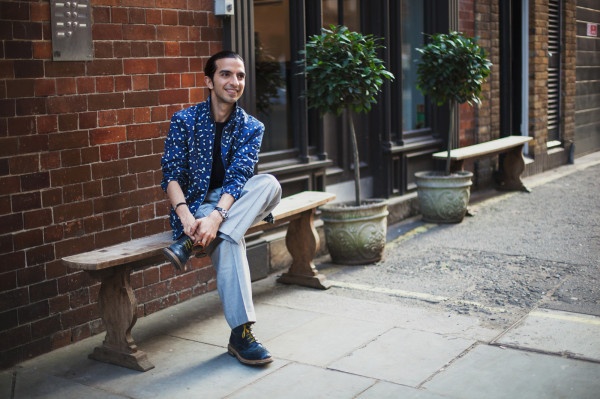
Imran Amed, founder and editor, The Business of Fashion
This radically different luxury market requires a new sort of chronicler and journalist. No one else fits that bill quite like Imran Amed, the creator of the seven-year-old industry must-read, The Business of Fashion. The McGill and Harvard Business School-educated London import went from advising professional investors about trends in the luxury sector to reporting on them. If you want to know how tech and fashion are transforming each other, ask Amed.
Going Mobile: "Smartphones are the single most important device a consumer owns, managing every aspect of their lives. In the U.S., there're 700,000 new smartphone consumers every week and some online fashion retailers are now doing 30% or more of their sales over mobile devices. That’s just the start. We're still at the beginning of what is a fundamental shift in consumer behavior. This is not something that luxury brands can ignore, no matter how rarefied, special, or exclusive they may be."
The New Boutique: "Going into a physical store will always be important. Eventually, we will see a real blurring of the lines between the two, where digital tools will enhance the physical retail experience, and vice versa. Physical retail will depend more and more on a brand’s ability to create an experience that the customer values, not just facilitate a transaction."
The Future of Luxury "Social media is upending traditional media, making fashion more open and real-time than ever before. The idea of serving customers in separate retail channels is beginning to disappear. The media and fashion landscapes are changing so fast, it’s hard to say what their future looks like. What’s clear is that in order to thrive in times of rapid change, we will have to adapt and iterate quickly, and embrace the pace of change. But, even if the fashion landscape is unrecognizable 10 years from now, it will still rely on one thing — creatives and business people working together."

Philip Bjerknes and Julie Fredrickson, cofounders, PlayAPI
Exquisite and inspiring — sure — but who says luxury can't be a little fun? Certainly it wasn't PlayAPI,cofounders Julie Fredrickson and Phillip Bjerknes. With their modular, modifiable programming platform, brands can create Facebook apps and mini-sites that allow you to build looks, vote on your favorite pieces, play fashion-themed games, and more. The end result? A personal, lighthearted relationship with your favorite label, which becomes less of a distant corporate monolith and more of an always-accessible digital playground pal .
Building A Better Mousetrap:
Bjerknes: “The trick about what we do is to give companies tools that are flexible enough that they can be altered to look and feel like any brand, but have enough of the basic technical parts that you can use them for any application. And, because we’re cost-efficient, brands can experiment more with creating the right message without sinking a large chunk of their budget. The end result is that a lot more marketing campaigns will succeed on their creative merits, rather than because the brand spent a lot of media dollars to get their message across.”
Identity Crisis:
Fredrickson: “High-net-worth consumers were the first to adopt new technologies, so luxury brands that didn’t move with them lost out on being able to touch their core consumer in many ways. Luxury consumers are more sensitive about having an experience that's convenient, and nothing says ‘on demand’ quite like constant access to a brand delivered straight to you through whatever medium you want. Tech also forced brands to be more articulate about their identity — to reinforce one core message across multiple platforms. Honestly, the most impressive digitally active brands are those who have a strong sense of themselves to begin with.”
Digital Divide:
Bjerknes: "Framing the digital world as 'IRL-lite' doesn’t make sense. For the lack of tangibility, you have the amazing ability for a community of fans and customers to come together around a brand and its communications. Honestly, that is just as important as any product. Also, the idea that tech somehow allows the barbarians in the gate is a little hollow. Good taste will always be the ultimate protector of luxury, and you can have that on any platform.”
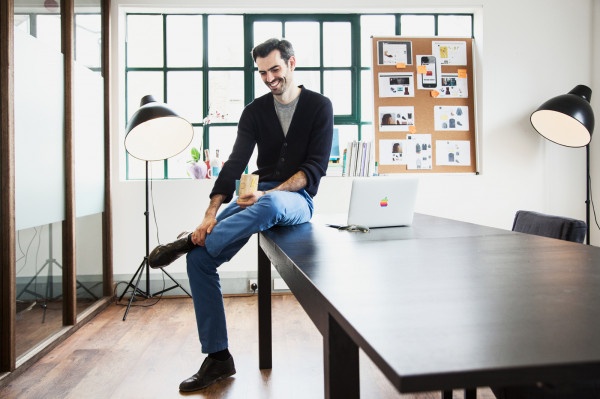
Chris Morton, CEO and cofounder, Lyst
Love our discount sites as we do, when it comes to custom-curated experiences, intuitive interfaces, and the pleasures of sharing your discoveries with friends, well...let's just say not all e-commerce is created equal. Near the top of the chain is Chris Morton's Lyst, an online shop that resembles a rolling, constantly updated social-networking feed. There, each new "post" is a piece you'll immediately covet, and your "friends" are your fellow shoppers and the designers you love. Poke away.
Tech Support: “The tech world and the fashion world speak different languages. I mean, the tech worldappears to be super-rational. The fashion world appears to be super-emotional. But the truth is, both want to create amazing shopping experiences, and both are needed for a great customer experience. A good fashion e-commerce site should work at least as well as Amazon, but it should be a lot more inspiring. At the same time, it can’t just be lots of rich images (and music) without simple navigation and functionality.”
Crowd Sourcing: “We’re all inspired by friends, influencers, and magazines, and most of us tend to ask someone else’s opinion before we buy something — especially when it comes to fashion. If you see something that your favorite brand, magazine, or blogger has added on Lyst, it’s the same thing — instant validation that the product you’ve been thinking of is a great buy. There’s no way that could happen in a physical store.”
Back to the Future: “Now, online, we're returning to the original luxury experience — one that knows what we’re into, that’s customized to your style and is full of things you love. In the future, we’ll all shop from platforms that have been tailored to us. Really, we're only at day one of how people buy fashion online.”
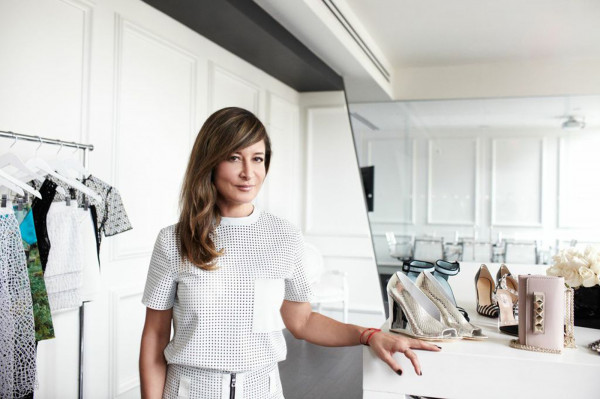
Tracy Taylor, acting style director, Net-A-Porter
Styling fashion shoots, crafting editorial content, making appearances at runway shows dressed to the nines, and enforcing quality, voice, and vision — sounds like an old-fashioned, high-on-the-masthead fashion editor, right? But, in today's marketplace, all those time-tested edit skills can appear seriously cutting edge when an e-commerce site is looking to out-luxe the competition. At Net-A-Porter, it's Tracy Taylor's extensive experience for glossy pubs like Details and Marie Claire and her uncompromising editorial touch that's helping to put the luxury-lined online retailer ahead of the curve.
Print To Pixels: “I grew up in L.A. I fell in love with fashion. I started my career there, shooting male models for agencies, then landed a West Coast fashion editor gig at DNR. Then I did the same thing forWomen’s Wear Daily and W, ultimately moving to New York to step in as fashion editor at Details. I moved to Marie Claire for eight years, five of them as the fashion director. Still, my most recent move to Net-A-Porter was my favorite.”
Online Avatar: “In the late '90s, Net-A-Porter founder Natalie Massenet was focused on landing a top editorial job at a high-profile international magazine. But then, during a self-proclaimed 'mind explosion,' she dreamt up this fabulous concept for the Internet. She wanted to find a way merge two things she loved — the shopping experience with the joy of reading the latest magazine — and our site was born. I have a tremendous amount of respect and admiration for that.”
In The Details: “You know, using our site always feels like a shopping experience to me. I know it was created to give shoppers an intuitive experience, and I appreciate that. But it’s the little things — like how we feature the model’s measurements, what size she’s wearing in the photo, and our magnify tool — that, I think, gives shoppers (like me!) confidence.”
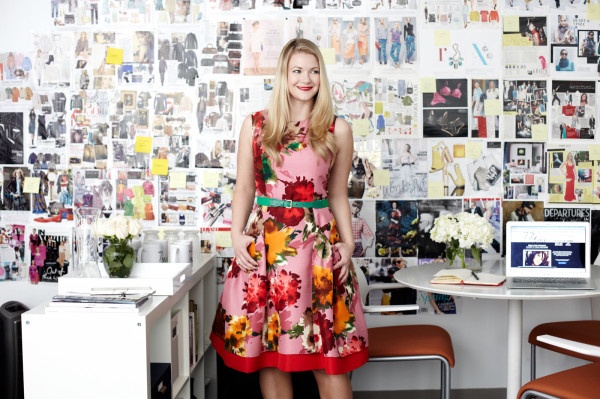
Heather Marie, founder and CEO, 72Lux
Not only are e-commerce sites becoming content publishers, your favorite blogs and magazines are becoming online bazaars, as well. Heather Marie's 72Lux smoothly shuttles you from your latest must-have discovery to a one-click checkout at a trusted e-retailer. It's a true luxury, created by the 28-year-old style-savvy techie, who first turned a profit on eBay when she was 11.
Early Adopter: “I always wondered how machines work and why they work. Sometimes, I think I should have been an engineer. But then again, I grew up in Wisconsin riding horses, hiking, and walking around barefoot in denim and hand-me-down T-shirts. That lack of exposure to fashion made me love it!”
Plug And Play: “A decade ago, luxury brands thought e-commerce would never work for high-end products. Now that shoppers are increasingly turning to e-commerce, those same brands are tripping over themselves trying to launch digital sales and promotion strategies (if they haven’t already). We were thefirst to create a full, digital platform for easy distribution, editorial promotion, and public relations that alsogenerates revenue for publishers.”
Hanging With The It-Crowd: "When I was first looking for a technical cofounder, I found several great technologists who were really excited about the idea, but couldn’t look past the idea that a lot of the coding would involve 'designer handbags, high heels, and makeup.' But now, I’m surprised by how much knowledge our top tech people have about the industry. It has definitely been an adjustment!"
Stay Tuned for the Latest News in Luxury and Technology with GemFind, on these
Social Networks: